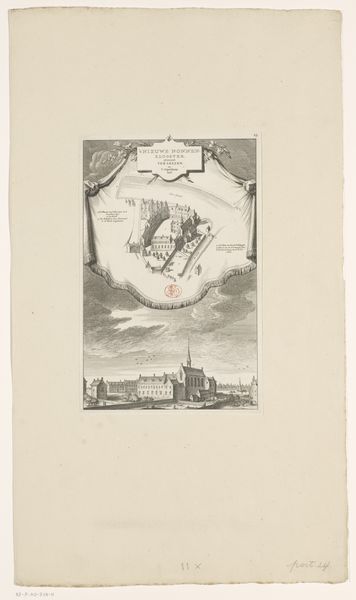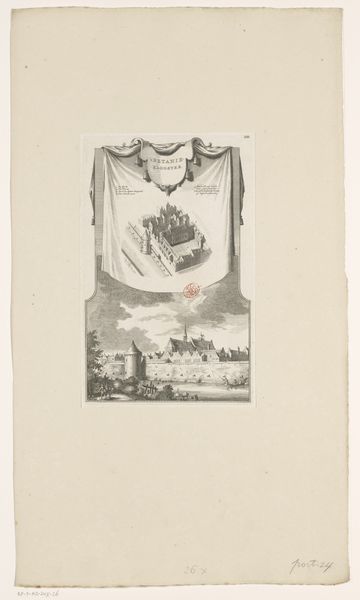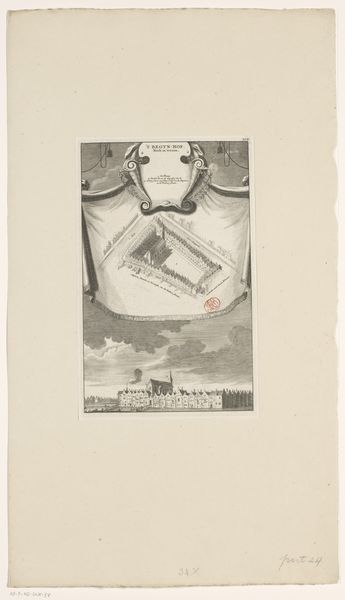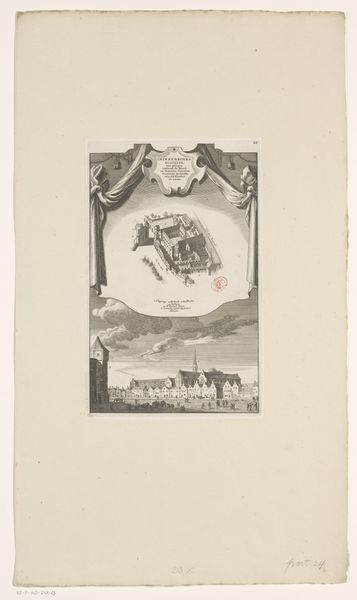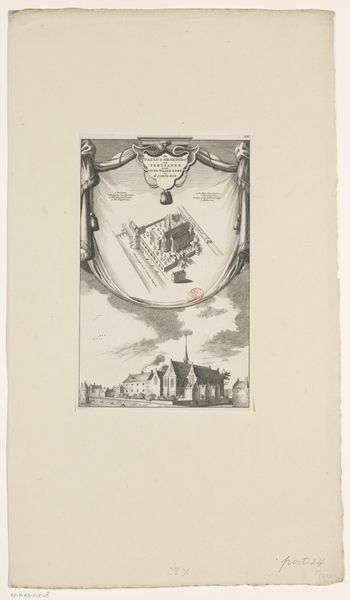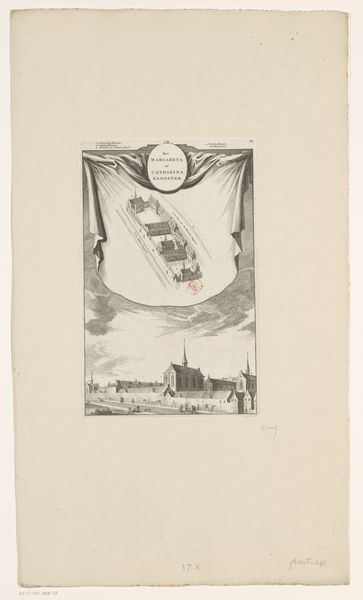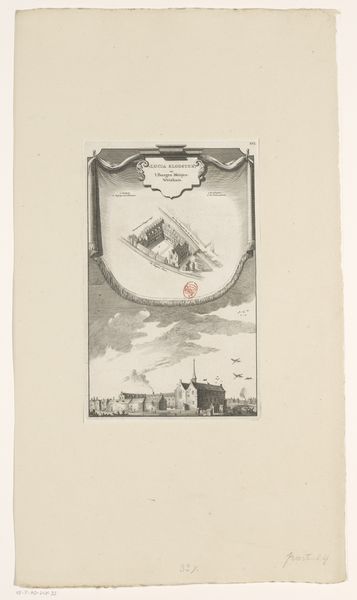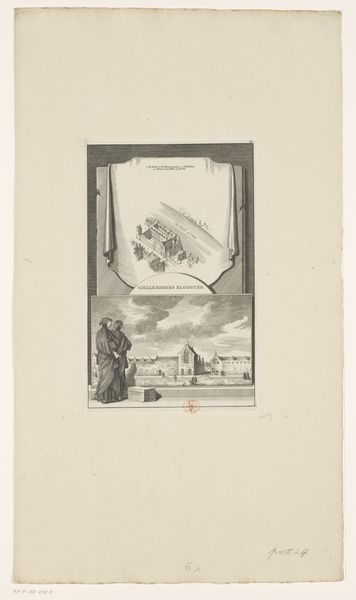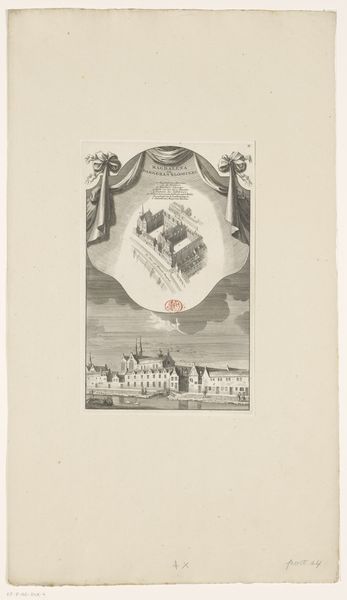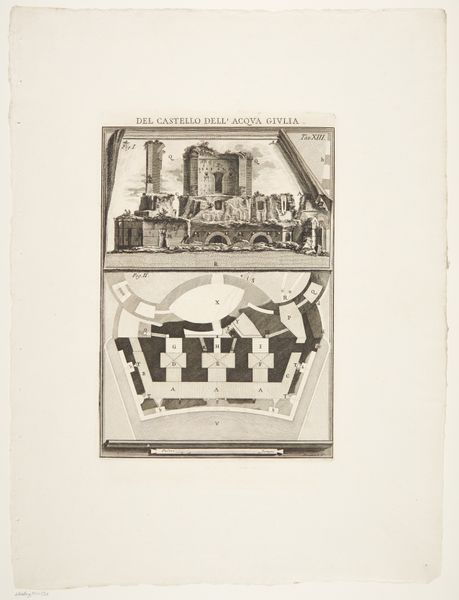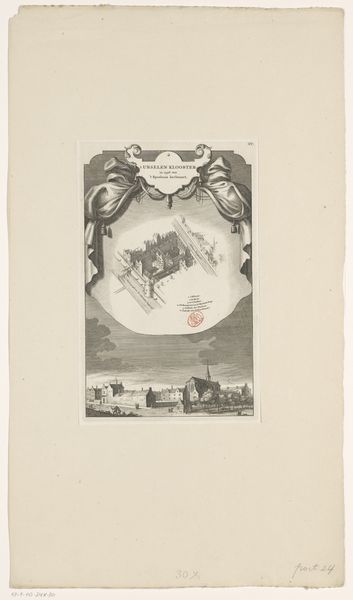
Het Sint-Margarethaklooster en de Sint-Pieterskapel te Amsterdam, ca. 1544 1760
0:00
0:00
anonymous
Rijksmuseum
print, engraving, architecture
#
baroque
# print
#
cityscape
#
engraving
#
architecture
Dimensions: height 265 mm, width 168 mm
Copyright: Rijks Museum: Open Domain
Editor: We're looking at "Het Sint-Margarethaklooster en de Sint-Pieterskapel te Amsterdam, ca. 1544," a print created around 1760, currently housed in the Rijksmuseum. It appears to be an engraving, depicting a cityscape with an almost cartographic perspective in the upper portion. The precision in the lines describing the architecture is quite striking. What are your initial thoughts on the formal composition? Curator: The engraving commands attention through its rigorous depiction of spatial relationships and architectural detail. Notice how the artist utilizes line weight and density to create a sense of depth, particularly in the rendering of the buildings' facades. The crisp, clean lines delineate forms with remarkable clarity. Do you observe any particular structural relationships between the different sections of the cityscape? Editor: I see that the upper, almost plan-like view is framed and distinct from the cityscape below. There is a definite separation of space and perspective being depicted here, as if one is a guide to the buildings depicted in the scene below. Curator: Precisely. Consider, then, how this duality establishes a dialogue between representation and abstraction. The artist meticulously constructs a visual system, inviting the viewer to decode the intricate relationships between line, form, and space. The formal elements supersede the subject of architecture and cityscape. Do you find the baroque framing influences your view? Editor: I do. Now that you mention it, the elaborate baroque frame around the plan-view actually works to further distance it, almost elevating it to the status of an allegorical map. Curator: A discerning observation. It is precisely in these layered formal complexities that the work transcends mere depiction and enters the realm of aesthetic contemplation. These self-referential qualities point to its artistic ambition. Editor: Thank you. Looking at this through a formalist lens really opened my eyes to aspects I had missed before. Curator: Indeed, it serves to show us how even a seemingly straightforward print can offer endless aesthetic complexity, revealed through rigorous analysis.
Comments
No comments
Be the first to comment and join the conversation on the ultimate creative platform.

